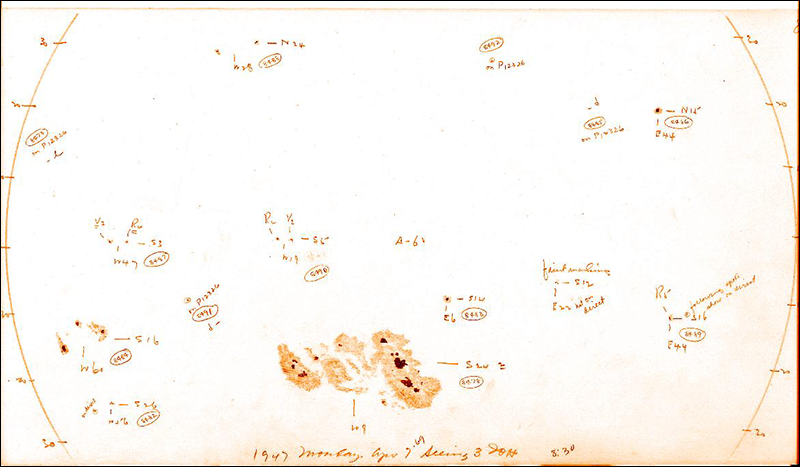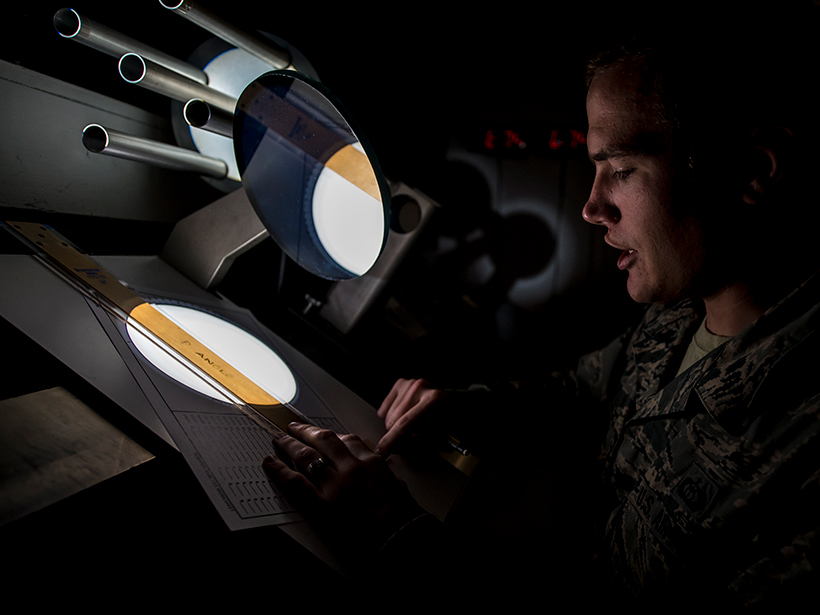Solar activity waxes and wanes in 10- to 11-year cycles; this is now general public knowledge. However, we know this only because of existing long-term records. Thanks to these histories, we also know that properties of solar cycles vary on timescales of 100 years and even longer. Thus, some of the most important processes on the Sun may take decades if not centuries to reveal themselves [Owens, 2013].
This long timescale means that some issues are not resolved, or even identified, at the time when data are acquired. Synoptic observations of solar activity, programs that span many years, feed future research to solve these issues.
However, present-day research funding schemes tend to focus on providing effective funding for rapidly changing research goals. Funding agencies and the National Academies emphasize short grants, lasting 3–5 years, as the prime vehicle for funding scientific research, a duration that is too short to ensure the survival of synoptic programs.
How do we change this focus so that the synoptic studies so critical to our understanding get sustainable funding?
Insights Gained from Taking the Long View
Historical data show the presence of grand minima and grand maxima, when the Sun was either inactive or extremely active for an extended period. Those major changes in solar activity seem to have created significant changes in the past Earth climate, making long-term records essential to solve critical issues of the 21st century.
Even records of past solar activity that come from isotopic sources such as ice cores and tree rings rely on establishing a relationship between radiocarbon measurements and the direct observations of solar activity. Because the natural circulation of carbon in Earth’s atmosphere was affected by the explosive increase in the use of fossil fuel at the beginning of the Industrial Revolution, only historical observations of solar activity can be used for calibrating radiocarbon data. The absolute radiocarbon standard is based on 1890 wood.
Sometimes, historical records of direct observations of solar activity themselves may require critical analysis. Recently recalibrated records of sunspot numbers [Clette et al., 2016] indicate, for instance, that solar cycle amplitudes may have been more uniform in the past 3 centuries than assumed until recently. If this result can be fully confirmed, it weakens the evidence for a solar cause of global warming.

We also have historical time series of direct measurements of sunspot magnetic field strengths (e.g., see Figure 1) and ultraviolet observations of the Sun going back more than a century. In combination with modern dynamo models, these historical data allow us to explore the possible changes in properties of solar plasma in the convection zone, where these magnetic fields are generated, and form a better understanding of future cycles.
Paraphrasing Carl Sagan, “You have to know the past to understand the future.”
Shortsighted Funding Strategies
Unfortunately, we are witnessing an alarming decline in funding, and even cancellation, of long-term programs.
Unfortunately, despite the importance of long-term time series, we are witnessing an alarming decline in funding, and even cancellation, of long-term programs. For example, last year brought us the disbanding of a solar group at Debrecen Heliophysical Observatory in Hungary, thus interrupting the recording of a historical time series of sunspot group areas that spans more than a century. This project had started at Greenwich Royal Observatory in May of 1874 and transferred to Debrecen at the end of 1978.
At Mount Wilson Observatory in California, scientists continue direct measurements of sunspot field strength that began in 1917. Funding for this project has been discontinued, but the effort lives on because of heroic efforts of remaining observing personnel. Similar cuts to sunspot measuring programs threaten research around the world.
Orchestrating Change
The success of long-term synoptic observations requires long-term sustainable funding. The short-duration project funding schemes that have prevailed over recent years are unsuitable for long-term data collection and continuous monitoring. Indeed, long-term continuity is a key requirement for producing meaningful and usable data sets.
This does not mean that nothing changes over the term of a time series. Not all historical time series need to be continued, and instruments inevitably change over the lifetime of long-term time series. However, change must be carefully planned and orchestrated to maintain the uniformity of a time series, including cross calibration of new and old instruments.
A lack of planning may lead to the creation of ad hoc “networks” of nonuniform instrumentation and unnecessary duplication.
Although some efforts are being made to develop replacements for aging synoptic facilities, there is an overall lack of long-term planning for such programs. This lack of planning may lead to the creation of ad hoc “networks” of nonuniform instrumentation and unnecessary duplication.
This area of research also benefits from close international collaboration. One strategy for using funding efficiently would be to establish a list of observables that the international community considers worthy to continue for an extended period of time. Then the funding agencies and the National Academies could be approached to establish a mechanism for shared funding for such time series. In this funding model, even the countries with limited research capabilities may contribute to the overall success.
To ensure the survival of historical time series, this work needs to be done now.

Our Obligation to Future Scientists
To some, conducting synoptic solar observations today may not seem as attractive as running space-based telescopes or the newest experimental instruments on the ground. Actually, our epoch proved highly efficient at exploiting past scientific records, thanks to modern computing and “big data” technologies, which often led to scientific breakthroughs.
If we neglect to continue these long-term data collection activities, we will prevent future generations of researchers from solving critical scientific issues that we can hardly foresee today.
For example, one recent study [Svalgaard, 2016] used 46 million hourly measurements of the geomagnetic field to reconstruct the solar extreme ultraviolet flux from 1740 to 2015. If we neglect to continue these long-term data collection activities, we will prevent future generations of researchers from solving critical scientific issues that we can hardly foresee today.
Remember, the impacts of solar magnetic activity on our current technologies or the global climate warming issues were completely unknown when Galileo, Schwabe, and Wolf started to patiently record dark sunspots centuries ago, but their efforts were vital to our current understanding of this impact. Scientists 15–20 years from now will perhaps wonder with disapproval why we did not continue recording the long-term record of observations.
We live next to a variable star, and the only way to learn about its long-term behavior, and ultimately to be able to predict it, is to guarantee the survival and continuity of long-term synoptic observations.
References
Allen, J., et al. (1989), Effects of the March 1989 solar activity, Eos Trans. AGU, 70, 1479, 1486–1488, https://doi.org/10.1029/89EO00409.
Clette, F., et al. (2016), Preface to topical issue: Recalibration of the sunspot number, Sol. Phys., 91(9), 2479–2486, https://doi.org/10.1007/s11207-016-1017-8.
Owens, B. (2013), Slow science: The world’s longest-running experiments remind us that science is a marathon, not a sprint, Nature, 495(7441), 300–303, https://doi.org/10.1038/495300a.
Svalgaard, L. (2016), Reconstruction of solar extreme ultraviolet flux 1740–2015, Sol. Phys., 291(9), 2981–3010, https://doi.org/10.1007/s11207-016-0921-2.
—Alexei A. Pevtsov (email: [email protected]), National Solar Observatory, Boulder, Colo.; and Frédéric Clette, Solar Influences Data Analysis Center, Royal Observatory of Belgium, Brussels
Editor’s Note: The authors are cochairs of the International Astronomical Union’s Inter-Division B and E Working Group on Coordination of Synoptic Observations of the Sun. The National Solar Observatory is sponsored by the National Science Foundation. Any opinions, findings, and conclusions or recommendations expressed in this publication are those of the authors and do not necessarily reflect the views of the National Science Foundation.
Citation:
Pevtsov, A. A.,Clette, F. (2017), To understand future solar activity, one has to know the past, Eos, 98, https://doi.org/10.1029/2017EO083277. Published on 29 September 2017.
Text © 2017. The authors. CC BY-NC-ND 3.0
Except where otherwise noted, images are subject to copyright. Any reuse without express permission from the copyright owner is prohibited.

